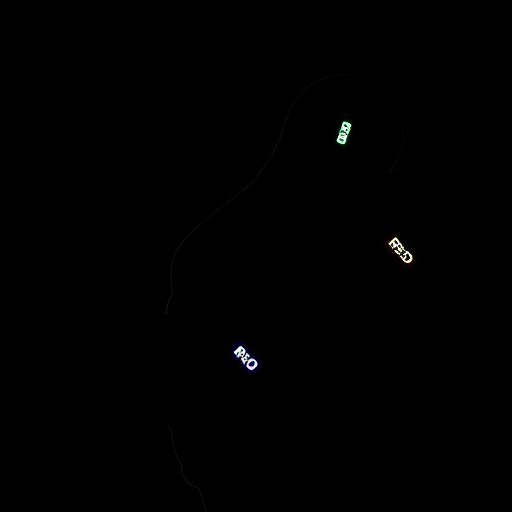LAWRENCE — Imagine this engineering headache: Using a wireless transmitter, you need to send 40 megabytes of data every single second (about the same amount of data as 10 YouTube videos streaming at the same time) over a distance of 100 miles. To complicate matters, one of the transmitters can't be bigger than a pack of chewing gum. Oh, and it's going to be traveling onboard an object 30,000 feet overhead at double the speed of sound.
What's worse, your miniaturized, high-powered transmitters must convey all that data on some of the trickier frequencies of the electromagnetic spectrum.
That's the challenge for University of Kansas researchers in the School of Engineering who just earned a $2.5 million contract from the National Spectrum Consortium to develop a new generation of communication technologies for airborne vehicles on U.S. test ranges. Their engineering work will help remake test-flight communications in the wake of a Federal Communications Commission auction of frequencies once used by the government.
"The electromagnetic spectrum is a limited natural resource that, like other types of resources, is hotly contested, valuable, and there's not enough of it," said Erik Perrins, professor of electrical engineering and computer science at KU, who leads the project. "Some of it is more desirable, like beachfront property, and some is in the desert. The FCC had to deal with wireless companies, the ones we all pay $100-plus a month, saying, 'There's this spectrum that's not being used well, and we could use it better, and we're willing to pay.'"
The FCC sale at first was expected to bring in from $10 to $15 billion but earned the government more than $40 billion in the end. Of that, $500 million was as set aside to relocate some government users to less-desirable real estate on the spectrum, funding projects that include the project spearheaded by Perrins and KU colleague Andy Gill, along with collaborators at Brigham Young University and students at both institutions. Their task is to utilize higher frequencies that don't penetrate buildings as well as lower segments of the electromagnetic spectrum.
"It's similar to when you're at a stoplight next to a car playing music — you're going to hear the bass from their radio, not the high end," Perrins said. "Different frequencies penetrate differently, and those lower frequencies are a nice sweet spot for cellular. For instance, if I'm talking on a cell phone inside a building, light doesn't travel through a building, but radio frequencies do. Cellular companies were interested in these frequencies because they're quite good for their application."
The KU research will optimize communications at about 5 gigahertz (GHz), roughly three or four times farther up the frequency dial than previous communications at U.S. test ranges. Initially, the work will take place in labs at KU and later will move to the Air Force Test Center at Edwards Air Force Base in California, perhaps most famous as the setting where Chuck Yeager broke the sound barrier in 1947. There, equipment developed in Lawrence will be tested aboard a Beechcraft C-12 Huron, a twin-engine turboprop aircraft.
The most challenging aspects of the research arise from the smaller bandwidth available at the new home and its vulnerability to signal deterioration.
"The project has to deal with efficiency," he said. "We're trying to pack more information into the same amount of space as before. It's a little like putting a multistory building on a parcel of land instead of a single-level structure, using a more efficient type of modulation than they've used previously. The power consumption is going to be different, as it's going to take a more powerful signal to propagate through the airwaves."
Because transmissions at 5 GHz can be problematic, the KU researcher said a key element of the research is to combine higher efficiency modulation with technology known as forward error control codes.
"Error control coding is a way to protect the bits in the signal, so when errors occur they can be detected and corrected automatically," Perrins said. "It's an added redundancy. For instance, when we're speaking using the English language, not every sound is a word, and not all words form a valid sentence. Because of that structure, if a word gets erased from a sentence, we still can guess what's missing. Or if someone calls out Derrick instead of Erik, I'll still raise my hand. That's what you do with error control coding. You add patterns that when they get disrupted you can correct them on the other side — and that allows you to communicate with a weaker signal."
The communications between test vehicles and ground-based receivers will carry much of the same kind of information that would be recorded to an aircraft's flight recorder, revealing aircraft performance and flight characteristics following a crash or malfunction.
"This will transmit the kind of data that a black box harvests, but in routine flight that data typically isn't sent to the ground because there are too many planes, there's not enough spectrum for that to take place," Perrins said. "But at a test range, because the test articles are in development, we'll need to get data to the ground immediately."
###
Media Contact
Brendan M. Lynch
[email protected]
785-864-8855
@KUNews
http://www.news.ku.edu
############
Story Source: Materials provided by Scienmag




